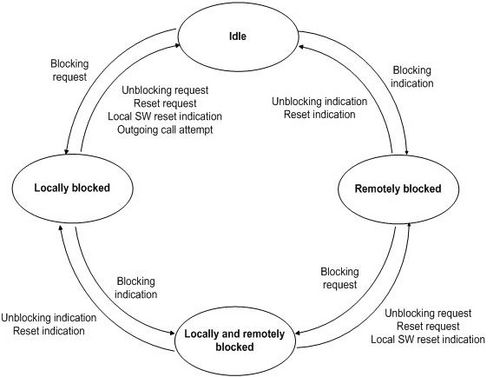ISUP:Blocking and unblocking
(initial content) |
(clean up) |
||
| Line 2: | Line 2: | ||
| − | [[ | + | [[Image:ISUP-blocking-unblocking.jpg|500px| ]] |
Latest revision as of 14:34, 10 September 2009
ISUP gives the opportunity to the local application to decide whether or not a specific circuit can receive or transmit normal call. This is achieved through the blocking/unblocking state of the circuit. An ISUP layer always remembers the state of the local circuit as well as the state of the remote ISUP peer regarding the same circuit. It is important to remember that a local stack cannot change the state of the remote stack regarding the block state of the circuit. This behavior prevents an SS7 node to re-activate a circuit that is flagged as out-of-service by the remote end which would be hazardous because it does not know the reason why it was blocked. Note that the ‘blocked’ state does not prevent test calls from being made on a circuit.
As shown in the figure above, a specific circuit can be in four different states. They are: idle; locally blocked; remotely blocked; and 'locally and remotely blocked'. A call normally cannot be made if the circuit is not in the ‘idle’ state. There is one exception to that as the ISUP layer will interpret an outgoing call as an ‘unblocking’ request from its host application if the circuit state was ‘locally blocked’.
Note: A SS7 application can only change the local state of a circuit. The remote state is always controlled by the remote node.
